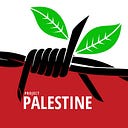The Road to Collision: Palestine/Israel
A weak Palestinian Authority and a new national-religious Israel
By Khaili Shikaki • Palestinian Center for Policy and Survey Research (PSR)
This moment might prove to be a turning point in the Palestinian-Israeli conflict, perhaps as important as the one that unfolded 30 years ago and became known as the Oslo process. While it is difficult to assess the future outcome of the current dynamics, it does not look good for Palestine or Israel.
The near future will be shaped by the collision of two developments, one Palestinian and one Israeli. On the Palestinian side, the Palestinian Authority (PA) has now reached the point where it can no longer fully meet Israel’s security expectations in ensuring a “monopoly” over coercive force in areas under its control. This development is currently evident in the formation of armed groups led by young Palestinians in cities and refugee camps, most prominently in the northern part of the West Bank. On top of that, Palestinians strongly believe that it was the costs imposed on Israel during the first and second intifadas that convinced it to view a Palestinian state as an Israeli national interest. It is this belief in the utility of force that is now fueling the rise of armed groups in the West Bank.
On the Israeli side, a “New Israel” is emerging, one characterized by a national-religious ideology eager to push away the Secular Israel that Palestinians have known during most of the past 30 years of the Oslo agreement and assert Israel’s permanent control over the West Bank. The formation of the current Israeli right wing and extreme government, dominated for the first time in Israel’s history by mostly religious and national-religious political parties, is the clearest sign to date of the second development. In the “New Israel,” the national-religious coalition seems to take the Palestinian-Israeli conflict back to its existential roots.
This paper explores the conditions that have led to the current developments in Israel and Palestine, conditions that might lead to the anticipated collision, and how Palestinians and Israelis might be able to avert it. In the scenario of collision, the PA continues to lose legitimacy and the trust of its own people. It is weakened further by Israeli punitive measures and increased military incursions into the Palestinian territories. The combined effect could lead to reduced PA law enforcement capacity thereby generating increased security vacuum in parts of the West Bank and the resultant formation of new Palestinian armed groups willing to challenge both the PA security forces and those of Israel. As the Israeli army seeks to fill the vacuum, it further weakens the PA leading to a vicious cycle of violence and bloodshed.
Last year was the most violent in Palestinian-Israeli relations since the end of the second intifada. The number of armed clashes[1] with the Israeli army has increased at least three times compared to 2021. Palestinian deaths in the West Bank alone stood at 146, the highest since 2005[2]. Israeli deaths stood at 31, the highest since 2008[3]. Settlers’ violent incidents against Palestinians stood in 2022 at 755 compared to 496 in 2021 and 358 in 2020.
Conditions could further escalate if in the midst of this cycle, Abbas becomes marginal or even departs the scene. The most probable outcome in this scenario, is increased anarchy in the West Bank that could be followed by an Israeli return to the reoccupation of parts or all of the occupied territories, as it did in 2002 in the midst of the second intifada. To avoid this outcome the PA needs to restore its legitimacy. Despite the low probability of this outcome under the current Palestinian leadership, the holding of parliamentary and presidential elections is the most critical and urgent remedial step without which the current dynamics cannot be stopped or mitigated. For Israel, the most critical measure is to restore the viability of the two-state solution, a step the current Israeli government cannot take, which means only dramatic Palestinian action or external pressure can slow down the gradual demise of the two-state solution.
Where to?
The dynamics described above might usher in a new era in Palestinian-Israeli relations. With the prospects for peace based on a two-state solution coming to an end, the Palestinian-Israeli conflict enters a new phase, one in which partition of the land might no longer an option. With that comes the end of diplomacy and negotiations. Attention of the actors now shifts to other means of resolving the conflict. For the Israelis, this means consolidated settlements construction and domestic legal steps to change the status quo regarding control and sovereignty over the land and the holy places. For the Palestinians, it could mean a return to the use of force.
The PA and the international community will find it difficult to acknowledge this reality. Nonetheless, they are not stupid; they just have no viable alternative. The PA is interested in survival and continued donor support. For that, it is highly dependent on Israel and therefore cannot directly challenge it. Instead of taking effective concrete measures of its own to shape conditions on the ground and counter the punitive measures of the new Israel, it is content with calling upon the international community do so. Thus, it is faced with navigating its conflicting interests at a time when it is at a historically low point in terms of legitimacy and credibility in the eyes of its own public. As it becomes weaker the prospects for a violent conflict with Israel increases.
The US and the rest of the international community cannot but realize that the process that is now ongoing can only end in the demise of the two-state solution. Nonetheless, they are unwilling to take the only effective measures to force Israel and the PA to turn away from the path of folly: elections for the Palestinians and a commitment, in words and deeds, to the two-state solution for Israel.
